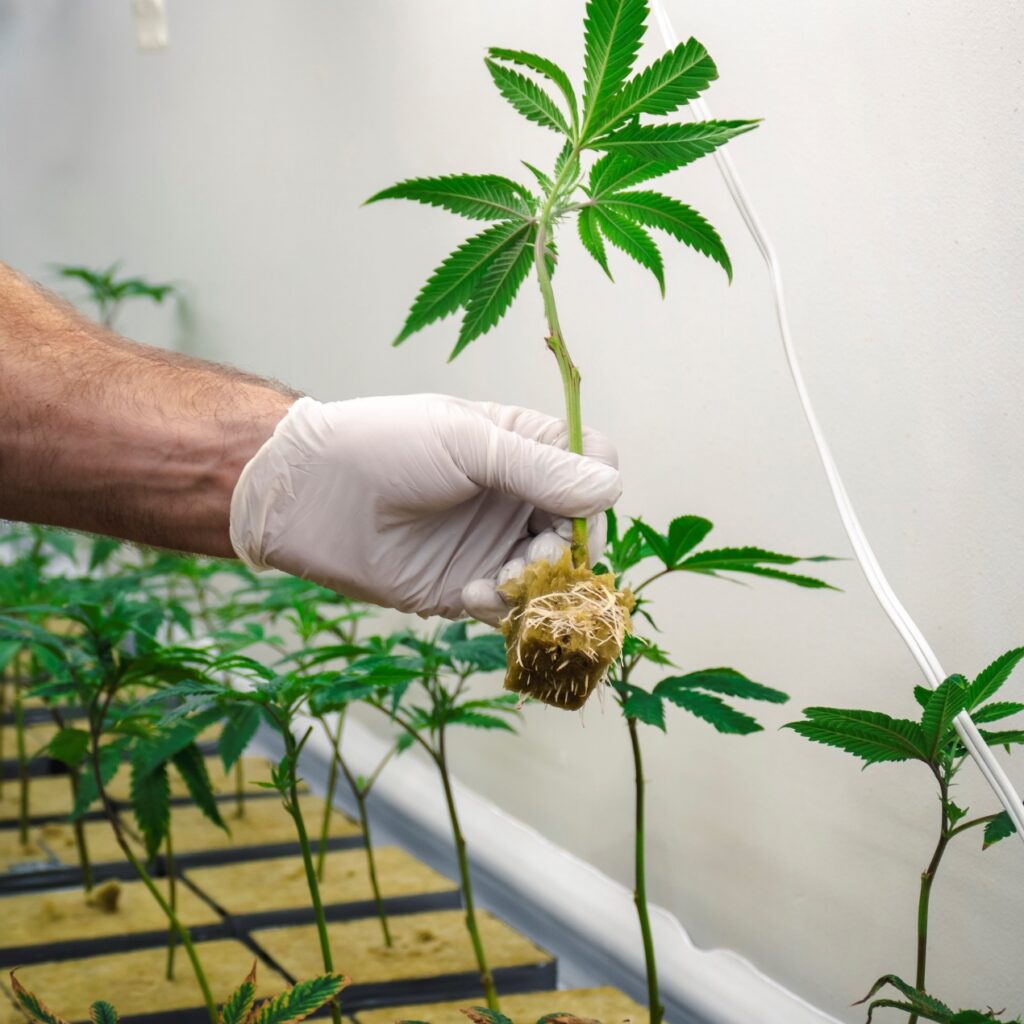
Cannabis is a plant with a wide variety of uses, from medically-beneficial oils to hemp fibres that can be used to create clothing. When surveying the range of cannabis products available, it can be easy to forget that all forms of cannabis derive from a plant. This plant needs to be carefully cultivated to ensure the products are of a high quality.
The cannabis plant requires the resources that all plants do: light, nutrients, air, and water. How these elements are manipulated will change the quality and type of the resulting product. The plant can also be pruned and trained according to the desired results. Quality assurance professionals know that there are several methods that can be used to ensure that cannabis products end up being of a consistent caliber. Read on to learn more about the process of cultivating cannabis, and its relevance to quality assurance.
The Anatomy of a Cannabis Plant
The cannabis plants that are widely grown and harvested are typically one of three species:
- Cannabis Sativa
- Cannabis Indica
- Cannabis Ruderalis
Cannabis Sativa plants tend to have longer flowering cycles during their cultivation process. They grow better in climates that are warm. Visually, they tend to be tall with thin, light green leaves.
Cannabis Indica plants have shorter flowering cycles than their Sativa counterpart. They can fare well in colder climates. Visually, they are shorter with broad, dark green leans and thick stems.
Cannabis Ruderalis is cultivated much less frequently than the other two due to the low-THC content it can produce. Like Cannabis Indica, they tend to be shorter plants.

Widely-cultivated cannabis plants tend to be one of three species
After cannabis quality assurance training, professionals know that no matter which species of cannabis plant, they can be divided into male and female plants. The male plants produce pollen that they use to fertilize the female plant, which produces the cannabinoids CBD and THC.
The Grow Cycle of the Cannabis Plant
When being cultivated, the cannabis plant’s grow cycle can be divided into three main stages:
- Germination
- Vegetation
- Flowering
This grow cycle can last anywhere between 10 and 32 weeks, depending on things such as plant breed, environmental factors, and whether it is growing indoors or outdoors.

The cannabis plant grows according to three different stages
When grown from a seed, the germination stage begins after the pollen fertilizes the female plant and creates a seed. When the root begins to break through the seed, they are ready to plant. Germination refers to the process of the root breaking through the seed.
The plant’s vegetation stage is the part of its grow cycle when it grows roots, stalks, and large leaves. This is the stage at which the plant can be manipulated. Their grow patterns can be trained to get an optimal yield that is in line with cannabis quality assurance standards.
Next is the last phase before harvesting, the flowering stage. This is when the female plant produces colas, which will eventually be harvested. Cannabis industry professionals will know that the female plant is ready for harvesting when the glands atop turn from clear to opaque in colour.
Cannabis Quality Assurance During Cultivation
Quality assurance is a set of processes that must be integrated into cannabis cultivation to ensure the safety and efficacy of the resulting products. One part of cannabis quality assurance involves testing plants for things like:
- Potency
- Heavy metals
- Pesticides
- Forms of contamination
Quality assurance also involves aspects such as ensuring that production facilities are up to sanitation standards, developing Standardized Operating Procedures (SOP) within cultivation facilities, and prioritizing quality consistency.

Quality assurance is necessary during cannabis cultivation
One way to centre quality assurance within cannabis cultivation is by substituting seed germination for asexual methods of propagation. This involves taking a cutting from a mother plant and planting in to preserve the genetic identity. Through this method, consistency of potency and quality is maintained across many plants.
Do you want to enroll in cannabis quality assurance courses?
Contact the Academy of Applied Pharmaceutical Sciences for more information!



